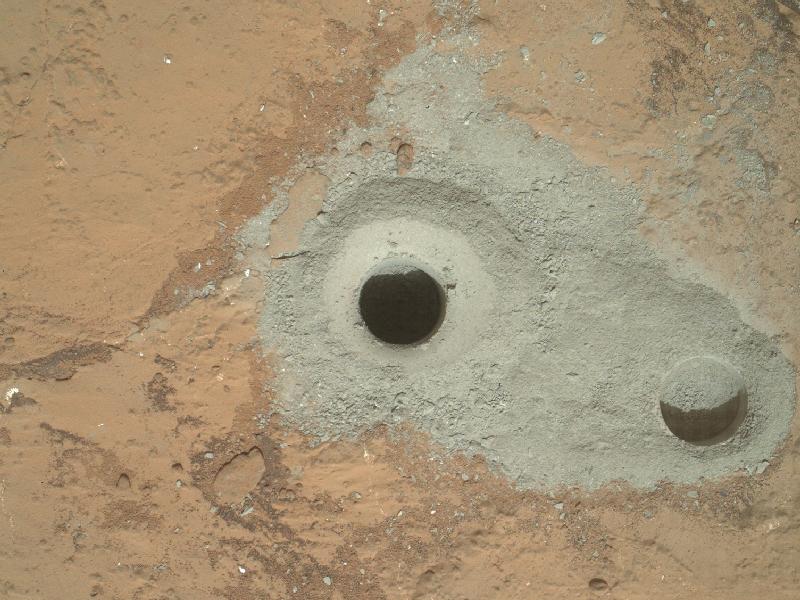SUMMARY
This is AI generated summarization, which may have errors. For context, always refer to the full article.

MANILA, Philippines – The Mars Curiosity rover has successfully drilled into Martian rock to collect possible evidence that could prove water once flowed on our planetary neighbor.
The Curiosity rover used a drill attached to the end of its robotic arm to drill a small hole on a fine-grained sedimentary bedrock on the planet, NASA announced Saturday, February 9.
“The most advanced planetary robot ever designed now is a fully operating analytical laboratory on Mars,” said John Grunsfeld, associate administrator for NASA’s Science Mission Directorate.
The hole, drilled on a rock named “John Klein” in memory of a NASA scientist who died in 2011, is approximately 1.6 cm wide and 6.4 cm deep. The rock powder produced by the drilling will be analyzed by Curiosity, and the data beamed back to Earth for further analysis.
Ground controllers back here on Earth will now program Curiosity to process the sample, so that these can be prepared for detailed analysis by instruments inside the rover.
“We commanded the first full-depth drilling, and we believe we have collected sufficient material from the rock to meet our objectives,” said Avi Okon of the Jet Propulsion Laboratory (JPL), which manages the Mars Science Laboratory (MSL) project.
![]()
First, the rock powder samples produced by the drilling will go to chambers in the drill bit, before it is transfered to a sample-handling mechanism on the rover. Some samples will be used to “clean” the hardware of Earth-based material, so as to avoid contamination.
Once the equipment is clean and ready, the sample handling device will sieve the sample, which will then be used by the rover’s Chemistry and Mineralogy (CheMin) and the Sample Analysis at Mars (SAM) instruments for a detailed analysis.
“To get to the point of making this hole in a rock on Mars, we made eight drills and bored more than 1,200 holes in 20 types of rock on Earth,” said Louise Jandura, chief engineer for the rover’s sample system.
“This is the biggest milestone accomplishment for the Curiosity team since the sky-crane landing last August, another proud day for America,” said Grunsfeld.
The $2.5 billion mission, set to last at least two years, aims to study the Martian environment to prepare for a possible future manned mission by 2030. – Rappler.com, with the Agence France-Presse
Add a comment
How does this make you feel?
There are no comments yet. Add your comment to start the conversation.